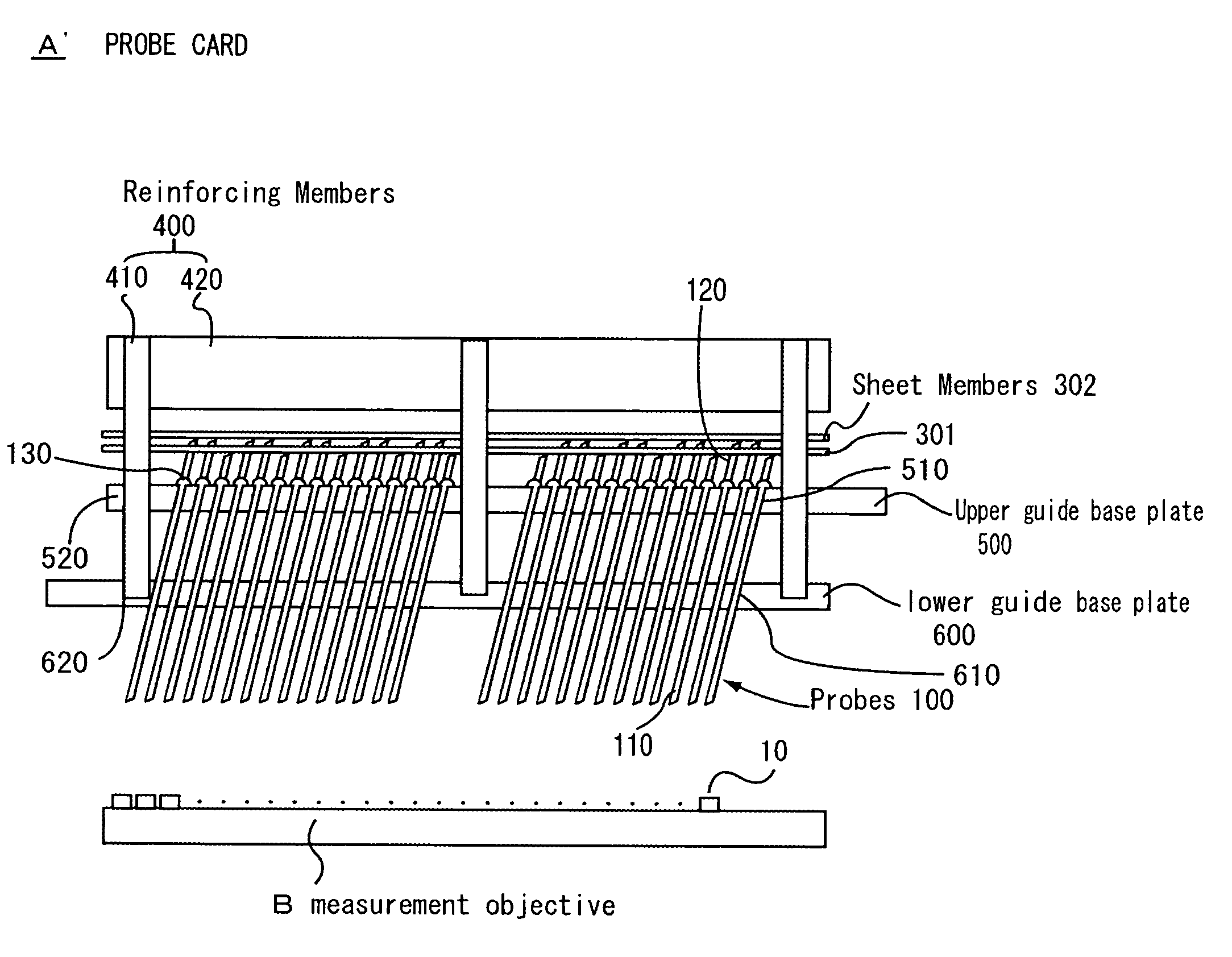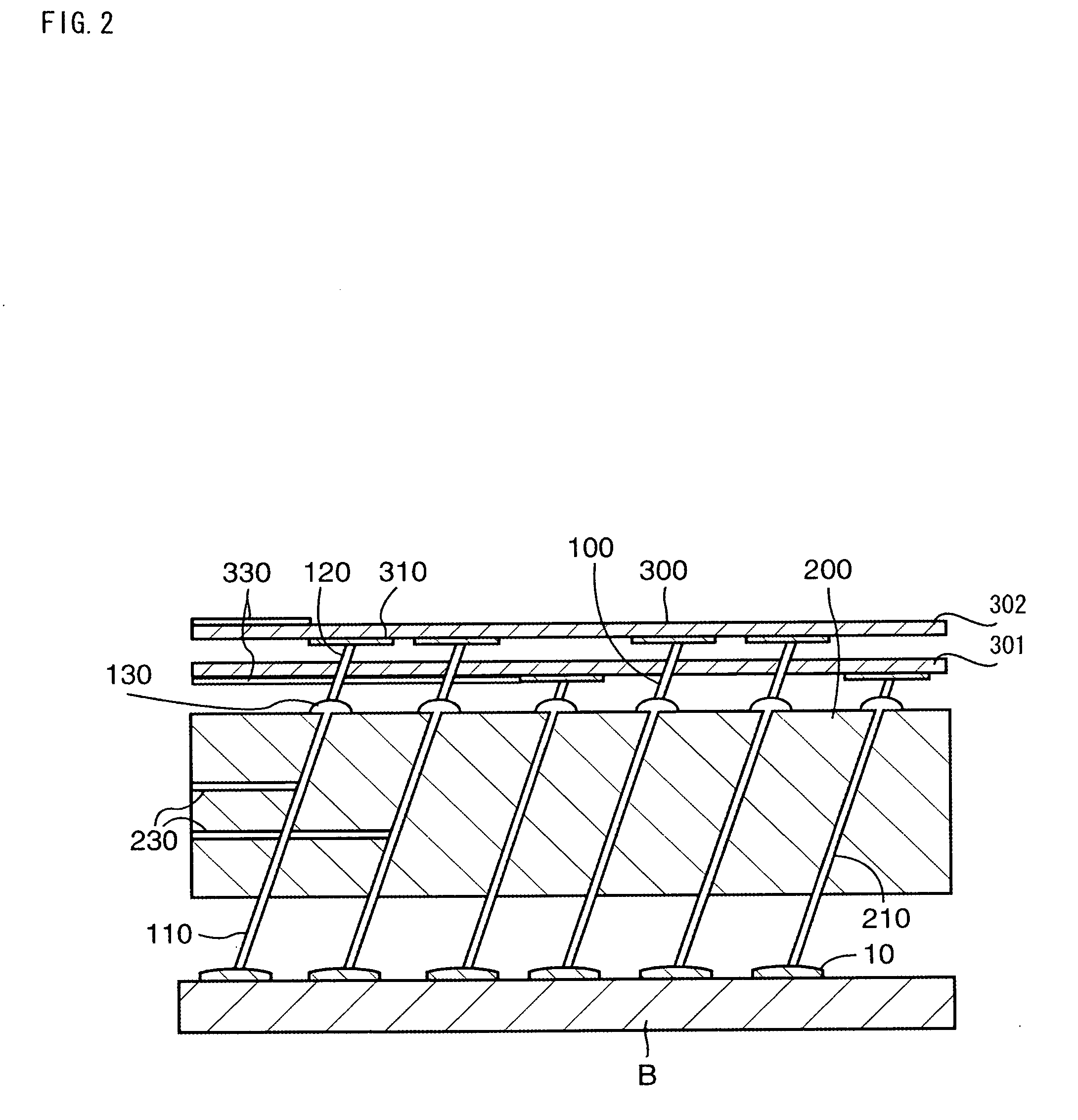Probe card
a technology of rectilinear probes and probes, applied in the field of probe cards, can solve the problems of easy breakage of rectilinear probes, difficult to dispose of probes at narrow pitch, and bringing in contact with probes, etc., and achieves the effect of high complexity
- Summary
- Abstract
- Description
- Claims
- Application Information
AI Technical Summary
Benefits of technology
Problems solved by technology
Method used
Image
Examples
embodiment 1
[0029] First of all, description will be given of a probe card related a first embodiment of the present invention with reference to the accompanying drawings. FIG. 1 is a schematic sectional view of a probe card related to the first embodiment of the present invention, FIG. 2 is an enlarged view of an α portion of the probe card, FIGS. 3(a) and 3(b) are views showing a guide base plate of the probe card, wherein FIG. 3(a) is a schematic plan view and FIG. 3(b) is a schematic sectional view, FIGS. 4(a) and 4(b) are views showing a reinforcing member for the probe card, wherein FIG. 4(a) is a schematic plan view, and FIG. 4(b) is a schematic sectional view, FIGS. 5(a) and 5(b) are views showing a sheet member of the probe card, wherein FIG. 5(a) is a schematic plan view and FIG. 5(b) is a schematic sectional view.
[0030] The probe card A shown in FIGS. 1 and 2 includes a plural rectilinear probes 100; a guide base plate 200 in which provided are plural guide holes 210 into which the ...
embodiment 2
[0044] Description will be given of a probe card related to the second embodiment of the present invention with reference to the accompanying drawings. FIG. 6 is a schematic sectional view of a probe card related to the second embodiment of the present invention and FIG. 7 is a schematic sectional view showing an attaching process for probes of the probe card.
[0045] The probe card A′ shown in FIG. 6 is of almost the same construction as the probe card A. The probe A′ is different from the probe card A in that an upper guide base plate 500 and a lower guide plate 600 are employed instead of the guide base plate 200. Therefore, detailed description will be given of different portions of the construction, but none of description of duplicated portions is given. Note that the same symbols as in the first embodiment are used to indicate the same members.
[0046] A silicon base plate similar to the guide base plate 200 is employed as the upper guide base plate 500. The upper guide base pl...
PUM
 Login to View More
Login to View More Abstract
Description
Claims
Application Information
 Login to View More
Login to View More - R&D
- Intellectual Property
- Life Sciences
- Materials
- Tech Scout
- Unparalleled Data Quality
- Higher Quality Content
- 60% Fewer Hallucinations
Browse by: Latest US Patents, China's latest patents, Technical Efficacy Thesaurus, Application Domain, Technology Topic, Popular Technical Reports.
© 2025 PatSnap. All rights reserved.Legal|Privacy policy|Modern Slavery Act Transparency Statement|Sitemap|About US| Contact US: help@patsnap.com



